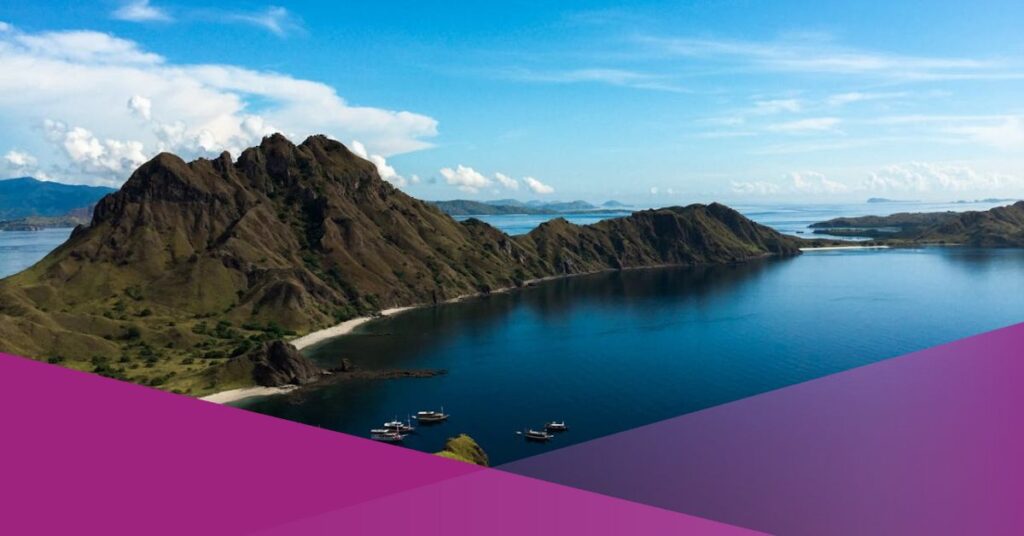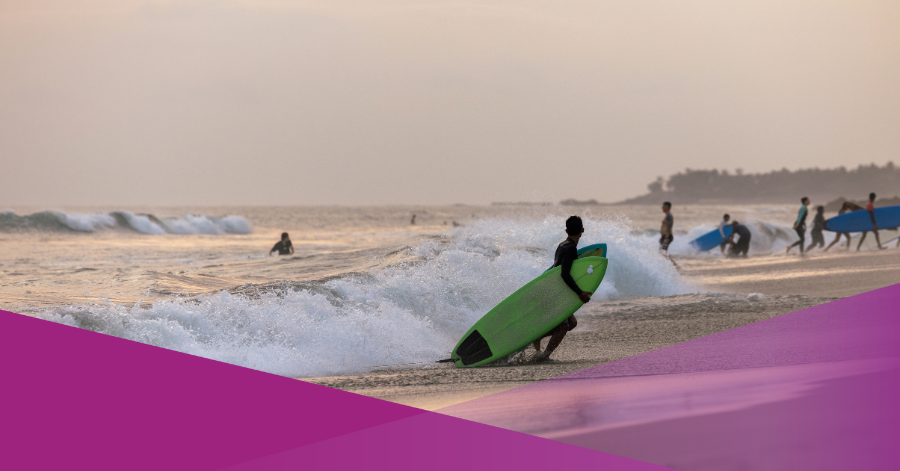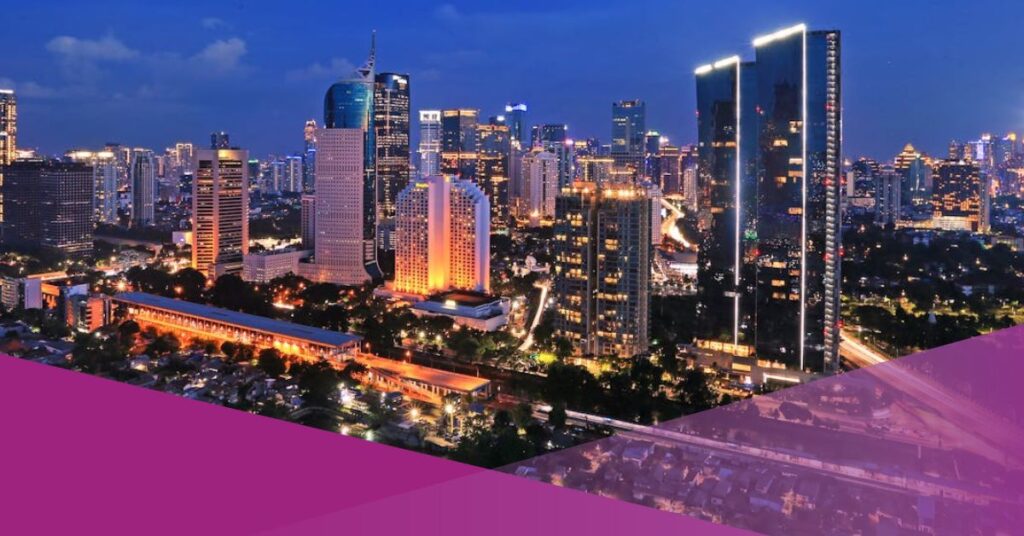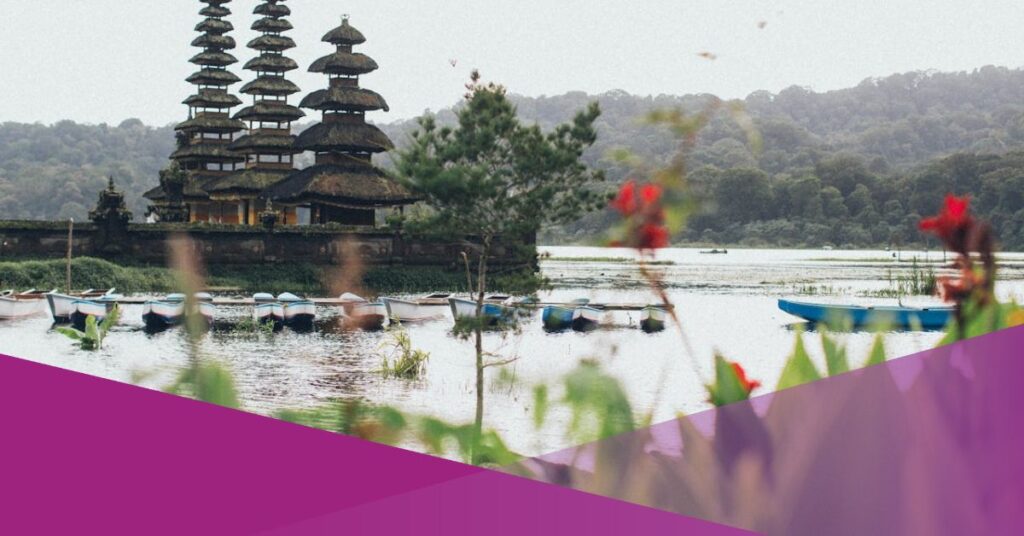Tucked away in the quiet surroundings of Beng Village, Gianyar, Bali, Kanto Lampo Waterfall offers visitors a peaceful natural setting that contrasts with some of the more well-known tourist spots across the island.
Interestingly, this stunning waterfall in Bali is more popular among foreign tourists than local residents. Many Balinese residents are only beginning to discover this hidden gem, even as international visitors queue up daily to capture the perfect photograph beneath its cascading waters. Water drops onto rocky cliffs, forming several terraces of water.
A Serene Experience at Kanto Lampo Waterfall in Gianyar, Bali
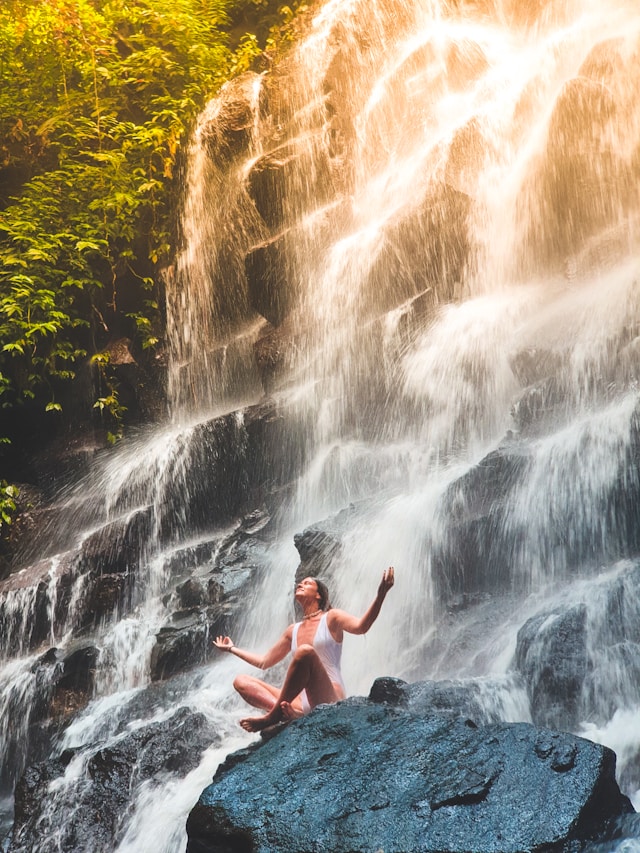
Unlike many waterfalls in Indonesia that require long treks through dense forest, Kanto Lampo is easily accessible. From the parking area, it takes only five to six minutes to reach the site by descending a stone staircase. The short path around the waterfall is mostly safe but can be slippery in parts, so appropriate footwear is recommended.
The best time to visit Kanto Lampo Waterfall is early in the morning, between 07.00 and 09.00 WITA during dry season. During these hours, the location tends to be less crowded, giving visitors the opportunity to enjoy the scenery in peace and take uninterrupted photos.
The peak tourist seasons are typically from July to August and during international holidays such as Christmas and New Year. Tourists seeking a quieter experience should avoid visiting during these periods.
Address: Jl. Kaliasem lingk.kelod kangin, Beng, Kec. Gianyar, Kabupaten Gianyar, Bali
Facilities and Entrance Fee
Visitors will find basic facilities at the waterfall, including a parking area, bathrooms, changing rooms, and a modest food court. However, it’s worth noting that non-cash payments are not yet accepted, so tourists should come prepared with cash. Additionally, the site does not currently have a prayer room for those who may require it.
The entrance fee to Kanto Lampo Waterfall is IDR 25,000 or USD 1,5 per person. This includes access to the site and parking. Tourists can also rent inflatable buoys for IDR 10,000 each to enjoy a bit of water play near the base of the waterfall.
Due to the slippery rocks, caution is strongly advised, and visitors should follow the safety instructions provided by the staff on-site.
The waterfall itself is unique in its formation. Standing approximately 15 metres tall, it flows down a series of naturally tiered rocks, creating a visually striking step-like pattern.
The clear water, combined with the surrounding lush greenery, creates a calm and refreshing atmosphere that is particularly soothing after a long day of exploring.
What to Expect and Safety Tips
Tourists visiting Kanto Lampo should be prepared for a few important things. Most notably, there is usually a queue to take photos at the most Instagrammable spots.
Due to high demand, visitors are generally limited to around three photographs and one short video per session at the main waterfall location. This ensures that everyone has a chance to capture their moment while maintaining a fair and efficient queue.
A few tips for a smooth visit include bringing a change of clothes or a swimsuit, wearing non-slip footwear due to the sharp and slippery rocks, and double-checking the route via maps to avoid getting lost. It’s also wise to pack lightly and keep valuables secured in waterproof bags.
Interestingly, a viral video of a local tour guide enthusiastically helping tourists pose for photos accounts for some of the waterfall’s fame.
Demonstrating positioning from a distance and suggesting creative stances, including romantic couple poses, the guide’s friendly attitude and professionalism won praise online. It’s just one example of the warmth and hospitality that visitors to Kanto Lampo feel is personal and memorable.
Lihat postingan ini di Instagram
Sebuah kiriman dibagikan oleh Katie Boggs | in Spain🇺🇸🇪🇸 (@katietheguiri)
How to Get to Kanto Lampo Waterfall
Kanto Lampo Waterfall is located on Jalan Kaliasem, Banjar Kelod Kangin, Beng, Gianyar Regency. From Ubud, it takes approximately 30 minutes by car and faster by scooter or motorbike.
Travellers coming from Denpasar can expect a journey of about one hour, covering around 27.7 kilometres via Jalan Prof. Dr. Ida Bagus Mantra.
For those arriving from Ngurah Rai International Airport, the drive takes roughly 65 minutes and spans approximately 42 kilometres. The route generally follows the toll road and several connecting highways, making the trip quite straightforward with the use of a navigation app.
Nearby Attractions Worth Visiting
Besakih Temple
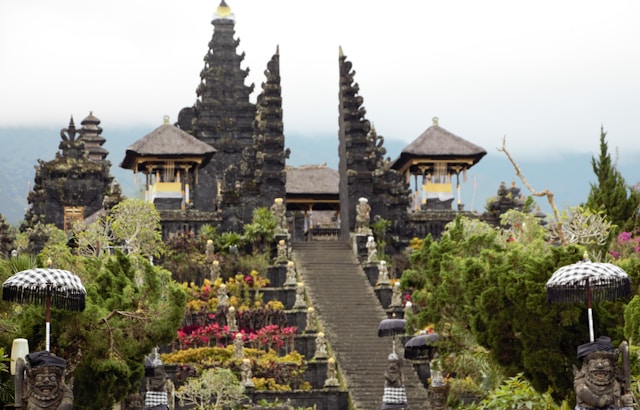
Often referred to as the “Mother Temple” of Bali, Besakih Temple is located on the slopes of Mount Agung. It is the largest and most important Hindu temple complex on the island. A visit here offers a deeper look into Balinese religious life, complete with stunning architecture and panoramic mountain views.
Penglipuran Village
Renowned for its orderly layout and traditional Balinese architecture, Penglipuran is a cultural heritage village in Bangli. Walking through the village offers insights into local customs, eco-living, and the preservation of Balinese culture in a modern age.
Kintamani, the natural beauty and tranquility of North Bali
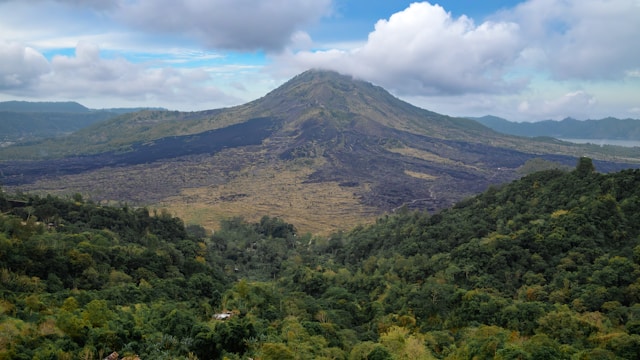
Located in the highlands of northeastern Bali, Kintamani offers dramatic views of Mount Batur and Lake Batur. The area is ideal for trekking, photography, or simply relaxing with a warm drink in one of the hillside cafes overlooking the caldera.
Village of Beng
This traditional village is not only home to Kanto Lampo Waterfall but also reflects authentic Balinese rural life. Surrounded by rice fields and forested areas, Beng provides a peaceful alternative to the island’s more commercial destinations.
Tukad Cepung Waterfall, one of the most famous waterfalls
One of Bali’s more mystical waterfalls, Tukad Cepung, is famous for the way sunlight filters through the cave above, creating a magihcal effect. Reaching the waterfall requires a short trek through a narrow canyon, adding a sense of adventure to the visit.
Mount Agung
Bali’s highest and most sacred volcano, Mount Agung, is a major trekking destination for those seeking adventure. A sunrise hike offers an unforgettable experience, though it requires physical preparation and the assistance of a local guide.
Tibumana Waterfall
Another tranquil spot near Ubud, Tibumana Waterfall, is known for its gentle stream of water falling into a clear natural pool. It is less crowded compared to Kanto Lampo and is ideal for those looking for a quiet place to swim or relax amidst nature.
By exploring Kanto Lampo Waterfall and its surrounding attractions, visitors can enjoy a rich blend of natural beauty, cultural heritage, and quiet retreat all within close reach of central Bali.
Whether you’re in search of the perfect photo, a refreshing dip, or a deeper understanding of Balinese life, Gianyar has much to offer.
Tirta Empul, perfect for those who seek a peaceful escape
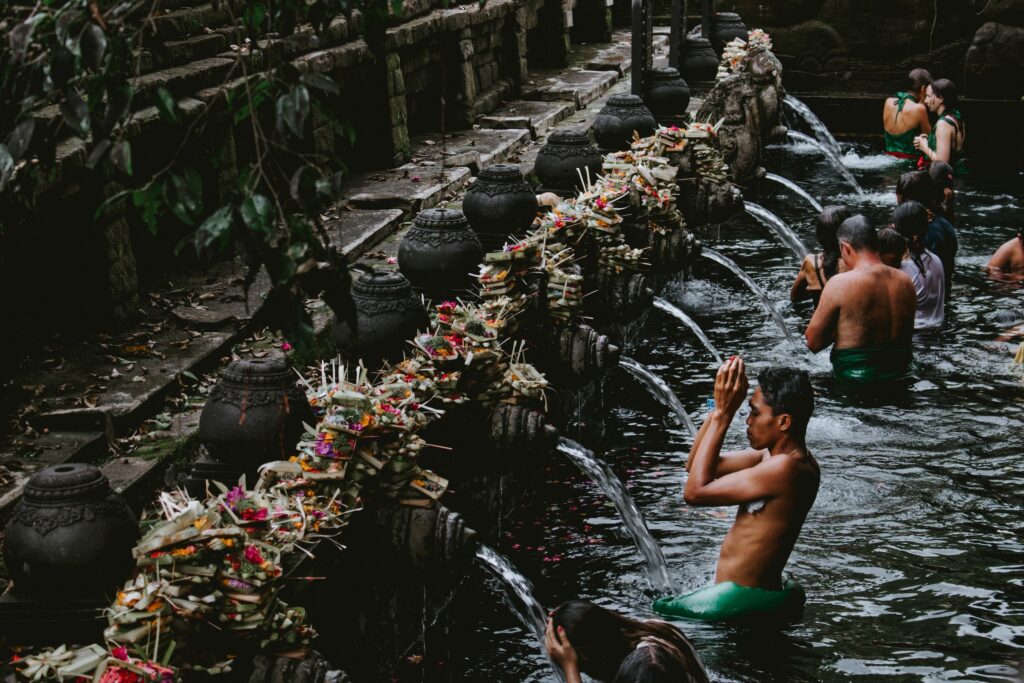
Located near Tampaksiring, Tirta Empul Temple is one of Bali’s most sacred water temples, famed for its holy spring used in traditional purification rituals. Founded over a thousand years ago, the temple holds deep spiritual significance for Balinese Hindus, who come to bathe in its crystal-clear pools.
Visitors can observe or participate in the melukat cleansing ceremony, which is believed to wash away negativity and renew spiritual energy.
Surrounded by lush forest, rice paddies, and centuries-old stone carvings, Tirta Empul remains a powerful testament to the island’s enduring religious traditions and connection to water as a sacred element.
Kanto Lampo Waterfall: A Hidden Chapter in Bali’s Natural Beauty
Tucked in the heart of Gianyar, Kanto Lampo Waterfall offers more than just a scenic backdrop. It tells a lesser-known tale of how local belief and nature intertwine. Unlike some of Bali’s more mainstream waterfall sites, when you’re visiting Bali, this one emerged in recent decades, with its formation deeply linked to spiritual significance and natural shifts in the environment.
As visitors descend the rocky path toward the cascading waters, they’re not just encountering a photo-worthy spot but stepping into a living piece of the area’s evolving narrative. For many, a stop at Kanto Lampo has become a meaningful addition to their itinerary, blending tranquillity with a subtle sense of cultural depth.
The area around the waterfall mirrors much of Bali’s natural beauty, offering shaded foliage, stepped rocks, and shallow pools perfect for wading or photography. While the growing influx of visitors has undeniably impacted the site, it has also brought tangible benefits.
The local community has been able to create livelihood opportunities, from managing ticket counters to guiding tourists, allowing them to reinvest in the landscape’s upkeep.
As with other natural attractions in Bali, the balance between spirituality and preservation remains a continuous effort, one that adds complexity and care to any trip to Bali that includes Kanto Lampo.


